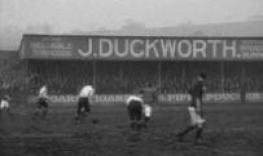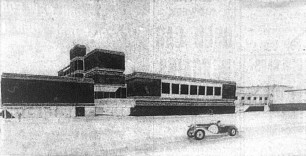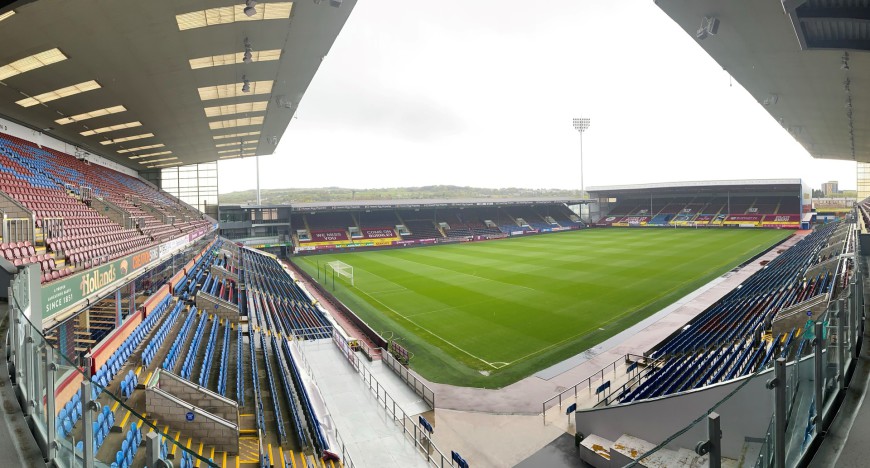
History of Turf Moor
The area of Turf Moor has been known as that for nearly 1000 years, today it holds games for both football and cricket, however it has also housed bowling, athletics, and horse racing in its past. The ground is often called traditional, and it is, four distinct stands on a grassy field that has hosted football since 1883. In fact, football was played on Turf Moor in 1878 in a game that might be the first ever played under lights. Burnley Rovers who were a Rugby club at its inception might have even played that game as it seems that Burnley Rovers and Burnley Cricket Club were closely aligned even before the football club was born and the team moved to play all their home games at Turf Moor.
Turf Moor originally was peat land cultivated for animals by the large farming families that owned the area, the name Turf Moor is probably derived from the cutting and burning of peat or turf as a fuel. Turf also is a reminder of the Turf Accountants or bookmakers that often set up shop for the few races that were held on the patch of land.
Racing was held at Turf Moor around 1832/4 when the land was owned by Colonel John Hargreaves (1775- 1834), 3rd Royal Lancashire Militia, whom lived at Bank Hall. He had married into the Ormerod Family via Lawrence Ormerod’s only surviving daughter Charlotte Ann. The Omerod family had owned the coal pits at Turf Moor and this is how Colonel Hargreaves had come to own them. His youngest daughter also named Charlotte Ann later married General Sir James Scarlett of the Battle of Balaclava and the charge of the heavy brigade fame. Colonel Hargreaves oldest daughter, Eleanor Mary married Rev William Thursby who, upon Colonel Hargreaves death in 1834, inherited the coal mines at Turf Moor. Rev Thursby then stopped the horse racing from continuing on his land and they moved for a short time to Glen View.
Rev Thursby later donated the land and money to build Victoria Hospital and which in turn gave birth to the Hospital cup and the reason Prince Albert visits Burnley in 1886. He also donated land at Queens Park, which was the first public park in Burnley.
Rev Thursby son, Sir James Thursby later also donated the Bank Hall estate which eventually became Thompson Park and whom a school in Burnley is named after.
It appears that Officers of the 3rd Royal Lancashire Militia started to play sport, in particular cricket on the patch of land nearest Belvedere Road, and took ownership of the land. They also had some athletics played on the land and a bowling green. Football/Rugby was also played on the area in around 1878.
This record is one of the first ever games played under floodlights, on 29th November 1878 a Manchester based company brought electrical equipment and three lamps to Turf Moor football field during a late event game. The cost of the event was £39, however, this seems like money badly spent as spectators left the game complaining (in Burnley? Never!!) that they couldn't see anything. There is a posiblity that this game involved Burnley Rovers, the team that would eventually become Burnley FC.
The committee for the cricket club wanted to create a centre for sporting excellence and althetics (at least long distance walking) was a sport that was enjoyed by people of Burnley. In 1883 the Cricket Club bought up the remaining land close to the Bee Hole Collier and invited Burnley FC to play their home games there. The Club took up the offer as the Calder Vale ground was often flooded and repair work to to the bridge in 1881 had cost a conciderable sum to repair.
In September 1883, the Cricket Club extended an invitation to the newly formed Burnley Football Club, who had been playing at Calder Vale. The Club stumped up the £65 costs to move, and thus Turf Moor became the home of Burnley FC.
Burnley's first game was to play local side Rowtenstall, who proceeded to beat Burnley, 6-3. Turf Moor was little more than a large field at this time, with a large natural mound where many supporters watched the game from. It could also be noted that the pitch sloped to one side a trait that would take almost a century to correct.
Just over a year after occupying Turf Moor, the club paid out for a seated grandstand that could accommodate about 800 fans, along with a two sided uncovered terrace which could hold another 5,000 as football took hold in the small town.
In 1886, Prince Albert became the first member of the Royal Family to visit a football ground, when whilst opening the Victoria Hospital in Burnley, he visited Turf Moor, and viewed the first half of a game between Burnley and Bolton.
The club in 1908 then built two new covered stands to help shelter supporters the incline Lancashire weather, that ran along both lengths of the pitch, the Brunshaw Lane Stand, which used to stand where the Bob Lord Stand does now, and the Star Stand, where the James Hargreaves Stand is built today. A year later the added a roof to the Cricket Field Stand.
During a third round FA Cup tie on 24 February 1924 between Burnley and Huddersfield Town, Turf Moor was filled with it's highest ever attendance, with 54,755 people turning up to watch the game.
On 25 March 1922, Turf Moor played host to it's only FA Cup Semi Final when Huddersfield beat Notts County 3-1, The Turf Moor pitch was initially deemed too short by the FA to stage the FA Cup Semi Final, so it was lengthened by 4 yards to 115 Yards, the extra dimensions being added to the Bee Hole End. It was then shortened to it original length in time for Burnley's next home game.
In 1927 Turf Moor played host to it's first and only full international game, when England entertained Wales, within the ranks of England players that day were two Burnley players, Louis Page and Jack Hill (who captained the side). Arthur Sutcliffe, a Burnley director also managed the England side that day. Sadly England lost 2-1, and Hill scored an own goal.
The famous Longside was finally finished in 1954, with a roof being fitted to the stand costing around £20,000, and many of the youth, would have put both blood and tears into that stand, as they were the ones who helped construct it. The Longside had replaced the Star Stand in the years between the World Wars, but only the lower areas of the stand were concreted, this had changed by 1954, when the remainder of the stand was concreted over and the roof fitted. At the same time the club installed floodlights, with the first game to be played under floodlight to be the friendly with local rivals, Blackburn Rovers.
During the Sixties, the Bee Hole End was renovated, increasing its size by adding a top layer to the stand, it remained uncovered until it was demolished 30 years later. It could not have a roof added, as the foundations were built on the old Bee Hole Mine, and would not be able to hold the extra weight. There was a old wives tale that the stand itself moved due to the jubilations of supporters, after a Burnley goal during a game in the sixties
Next for renovation was the Cricket Field Stand which was re-built in 1969 at a cost of £180,000. The new stand which still stand today, was built to house the changing rooms for both home and away teams, bath area and referee changing rooms. It was at it's time one of he most advanced stands in the world, and an oil based central heating system had been installed to keep supporters warm during games, it was devised that hot air would be circulated around the stand and into pipes which would lead directly to the area around the feet of supporters. This idea dropped with two years when it proved to costly. The stand which gave Turf Moor a unique look as players entered the field of play from behind the goals, instead of at the half way line was opened by the Lord Lieutenant of Lancashire.
Chairman Bob Lord then devised the total re-development of Turf Moor and it's surrounding area, he stated that he wanted to buy the Cricket Ground, and establish a stadium village, which would contain a hotel and the biggest night club in Lancashire. By 1970 he had managed to buy a small strip of land that ran along the length of Brunshaw Road, where a number of retail outlets were to be housed, and a 360 ft area behind the Cricket Field Stand to re-situate the flood lights, but his plans at buying out the Cricket Club fell on deaf ears and his plans never materialised, the strip of land which ran the length of Brunshaw Road was made into a car park.
Bob Lord wasn't satisfied there, and in 1974 he paid for the relaying of the Turf Moor pitch, which incorporated new drainage technology, the pitch was raised and the slope that been an ever present since the club had arrived at Turf Moor was removed. He then replaced the Brunshaw Road stand, with a new all seater stand named after himself, which was opened in 1974 by the then Prime Minister Edward Heath. The stand would hold 2,800 supporters and cost £480,000 and contained the board room and a number of luxurious seats for Burnley's and visiting Clubs directors.
After the Taylor Report had stated all grounds must become all seater stadiums, the Longside and Bee Hole stands' days were numbered, and in 1994 the club announced the redevelopment of the two standing areas.
In September 1995, the Longside watched it's final game, and it was demolished and a new stand, the James Hargreaves Stand (it was originally named the North Stand), built in it's stead. By April 1996, the stand was ready and then work began on the Bee Hole End. The new "twin" two tier stands cost £5.3 million, and the whole ground was re opened, with it's newest stand named the Jimmy McIlroy stand, in September 1996.
In May 2007, Turf Moor hosted the England B v Albania friendly international, and although the game was not officially recognised as a full international, a number of England first team players played in the game, including England's all time top competitive goal scorer, Michael Owen.
Turf Moor was also chosen to host England Under 21 games and England Woman’s international football.
In 2017, plans were finalised to build two small stands that would house disabled supporters. These would be built in the corners between the North Stand and East Stand, which would also house the LED score board and between the East stand and the Bob Lord Stand. Both stands would be constructed to provide viewing platforms for supporters who were physically disabled to attend the games. The stands were completed for full use in 2021/22 season.




